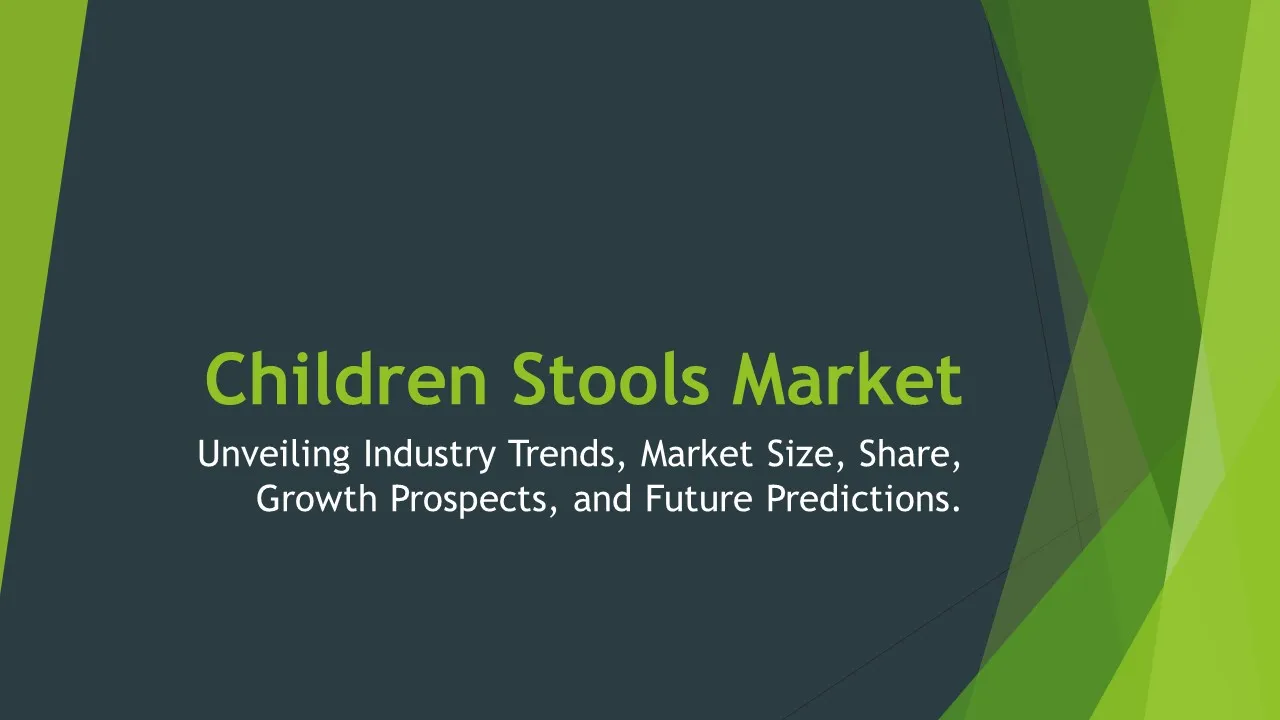Packaging Tubes Sales
Packaging Tubes Market Segments - by Product Type (Plastic Tubes, Paper Tubes, Aluminum Tubes, Laminated Tubes, Other Material Tubes), Application (Cosmetics & Personal Care, Food & Beverages, Pharmaceuticals, Homecare & Toiletries, Industrial, Other Applications), Distribution Channel (Online Retail, Offline Retail, B2B), Diameter (Less than 25mm, 25-50mm, 50-75mm, 75-100mm, More than 100mm), and Region (North America, Europe, Asia Pacific, Latin America, Middle East & Africa) - Global Industry Analysis, Growth, Share, Size, Trends, and Forecast 2025-2035
- Report Preview
- Table Of Content
- Segments
- Methodology
Packaging Tubes Sales Market Outlook
The global packaging tubes market is projected to reach USD 11.5 billion by 2035, growing at a CAGR of approximately 5.8% during the forecast period from 2025 to 2035. This growth can be attributed to the rising demand for sustainable packaging solutions and the increasing consumption of personal care, cosmetics, and pharmaceutical products. Additionally, consumer preferences for convenience and functionality in packaging are driving innovation in the design and manufacturing of packaging tubes. The expansion of e-commerce and online retail is further propelling the market as more consumers prefer lightweight, easy-to-use packaging that ensures product integrity and shelf appeal. As a result, the packaging tubes market is poised for significant growth in the coming years.
Growth Factor of the Market
The packaging tubes market is experiencing significant growth due to several key factors. Firstly, the increasing popularity of eco-friendly and recyclable packaging options is driving demand for packaging tubes made from sustainable materials. With consumers becoming more environmentally conscious, companies are investing in biodegradable and reusable packaging solutions to meet these demands. Secondly, the rapid growth of the cosmetics and personal care industry is a major driver of the packaging tubes market, as these sectors require innovative and aesthetically pleasing packaging to attract consumers. Thirdly, advancements in manufacturing technologies have enabled companies to produce high-quality tubes that are cost-effective while improving functionality and durability. Furthermore, the expanding pharmaceutical sector is also contributing to market growth as the need for hygienic and tamper-proof packaging becomes paramount. Lastly, the rise of online shopping and e-commerce is pushing companies to design packaging that is not only visually appealing but also efficient for shipping and storage.
Key Highlights of the Market
- Projected growth rate of 5.8% CAGR between 2025 to 2035.
- Significant demand from the cosmetics and personal care industry.
- Increasing focus on sustainable and recyclable packaging materials.
- Advancements in manufacturing technologies enhancing product quality.
- Growth in online retail driving innovations in packaging design.
By Product Type
Plastic Tubes:
Plastic tubes dominate the packaging tubes market due to their versatility, light weight, and cost-effectiveness. They are widely used across various industries, including cosmetics, pharmaceuticals, and food products. Plastic tubes offer excellent barrier properties, preventing contamination and maintaining product integrity. In addition, their customizable designs allow brands to create attractive packaging that resonates with consumers. The widespread adoption of plastic tubes can also be attributed to advancements in production techniques, which have improved the quality and performance of plastic materials. However, the increasing environmental concerns surrounding plastic waste may lead to a shift towards more sustainable options in the future.
Paper Tubes:
Paper tubes are gaining popularity in the packaging tubes market, primarily due to their eco-friendly attributes and recyclability. These tubes are commonly used in cosmetics, food items, and various household products. The inherent strength of paper tubes, combined with the ability to print high-quality graphics, makes them an appealing choice for brands looking to enhance their visual identity while being environmentally responsible. Furthermore, as consumer demand for sustainable packaging grows, companies are increasingly opting for paper tubes as a viable alternative to plastic. The growth of the paper tubes segment is also supported by innovations in paper technology that enhance durability and moisture resistance, making them suitable for a wider range of applications.
Aluminum Tubes:
Aluminum tubes are known for their premium appearance and excellent barrier properties, making them a preferred choice in the pharmaceutical and cosmetic industries. Their ability to protect sensitive contents from light and air ensures product longevity and integrity. Aluminum tubes are often seen as a luxurious option for brands looking to make a statement with their packaging. Additionally, these tubes are fully recyclable, aligning with growing consumer preferences for sustainable materials. As such, the aluminum tubes segment is expected to continue growing, particularly among brands that prioritize high-quality and environmentally friendly packaging solutions.
Laminated Tubes:
Laminated tubes are increasingly being adopted in various sectors, including food, cosmetics, and pharmaceuticals, due to their exceptional barrier properties and flexibility. These tubes consist of multiple layers of materials, which can be tailored to meet specific packaging requirements. Laminated tubes offer a perfect combination of protection, aesthetic appeal, and functionality, making them an attractive choice for brands looking to differentiate their products on the shelf. Moreover, advancements in laminating technology are enabling manufacturers to produce tubes that are not only visually appealing but also highly effective at preserving product quality. This segment is expected to see a steady growth trajectory as more companies recognize the benefits of laminated packaging solutions.
Other Material Tubes:
The other material tubes segment includes tubes made from materials such as glass, biodegradable composites, and metal. While these options represent a smaller share of the overall packaging tubes market, they cater to niche applications that require specialized packaging solutions. For example, glass tubes are often used for high-end skincare products, while biodegradable composite tubes are becoming increasingly popular in the eco-conscious market. The diversity within this segment allows manufacturers to cater to a wide range of customer preferences and requirements, driving innovation and growth. As the demand for unique and specialized packaging solutions continues to rise, the other material tubes segment is expected to grow steadily.
By Application
Cosmetics & Personal Care:
The cosmetics and personal care segment is one of the largest applications for packaging tubes, driven by the rapidly growing beauty and personal care market. Packaging tubes provide an attractive and functional solution for a wide array of products, including creams, gels, lotions, and serums. Consumer preferences for convenient and easy-to-use packaging have further fueled demand in this segment. Moreover, the emphasis on aesthetic appeal and brand differentiation has led to numerous innovations in tube design, printing, and decoration. As the global beauty and cosmetics industry continues to expand, the packaging tubes segment is expected to experience robust growth, driven by the launch of new products and the introduction of eco-friendly packaging solutions.
Food & Beverages:
The food and beverage application segment is witnessing significant growth due to changing consumer lifestyles and evolving eating habits. Packaging tubes are utilized for various food products, including sauces, pastes, and condiments, as they provide an efficient way to dispense and store products while preserving freshness. The convenience of squeezable tubes allows consumers to enjoy their favorite food items with ease. Additionally, the growth of the organic and natural food market is steering manufacturers toward innovative packaging solutions that ensure product integrity and maintain quality. As convenience and health remain top priorities for consumers, the demand for packaging tubes in the food and beverage sector is expected to rise steadily.
Pharmaceuticals:
The pharmaceutical application segment relies heavily on packaging tubes due to their ability to provide hygienic, tamper-proof, and user-friendly packaging solutions. Tubes are commonly used for ointments, creams, gels, and liquid medicines, offering a protective barrier from environmental factors. The growing focus on health and wellness, coupled with the increasing prevalence of chronic diseases, is driving demand for pharmaceutical products, consequently boosting the need for effective packaging solutions. Manufacturers are also incorporating advanced features such as child-resistant caps and easy-to-read labeling on pharmaceutical tubes to enhance safety and user convenience. With the pharmaceutical industry projected to grow continuously, the demand for packaging tubes in this segment is expected to follow suit.
Homecare & Toiletries:
The homecare and toiletries segment encompasses a diverse range of products, including cleaning supplies, detergents, and personal hygiene items. Packaging tubes play a vital role in ensuring these products are stored and dispensed effectively. The convenience of tube packaging aligns with consumer preferences for easy-to-use and mess-free solutions. Additionally, the rise in eco-conscious behavior has prompted manufacturers to explore sustainable alternatives for packaging, which is further driving innovation in this segment. As the demand for homecare products continues to grow, packaging tubes are expected to maintain a significant presence in this diverse sector.
Industrial:
The industrial application segment involves the use of packaging tubes for a range of applications, including adhesives, sealants, and lubricants. These tubes are designed to withstand harsh conditions and provide durability during storage and transportation. As industries continue to evolve and expand, the demand for effective packaging solutions that meet specific requirements is on the rise. Manufacturers are increasingly looking for packaging that delivers performance, safety, and ease of use. Given the ongoing growth in various industrial sectors, the packaging tubes market is expected to see strong demand from this application segment.
Other Applications:
The other applications segment encompasses a wide range of niche markets, including art supplies, veterinary products, and specialty goods. This segment is characterized by unique packaging requirements that differ from mainstream applications. Packaging tubes in this category provide customized solutions tailored to specific products, enhancing usability and appeal. As consumer preferences shift toward personalized and unique products, the demand for specialized packaging solutions is likely to grow. While this segment may represent a smaller share of the overall market, its innovative nature offers significant opportunities for growth as manufacturers seek to cater to evolving customer needs.
By Distribution Channel
Online Retail:
The online retail segment has witnessed explosive growth in recent years, driven by the increasing popularity of e-commerce and changing consumer behaviors. As more consumers turn to online shopping for convenience, the demand for packaging tubes is also growing in this channel. Brands are leveraging online platforms to reach a wider audience and enhance their market presence. Additionally, the ease of comparison shopping and access to a vast array of products online allows consumers to make informed decisions regarding their purchases. Companies are also investing in efficient packaging solutions that ensure products are delivered safely, further fueling demand in this channel. As e-commerce continues to expand, the online retail segment for packaging tubes is expected to see continued growth.
Offline Retail:
The offline retail segment includes traditional brick-and-mortar stores, supermarkets, and specialty shops. Despite the growth of online shopping, offline retail remains a significant channel for packaging tubes, particularly in industries such as cosmetics and food. Consumers often prefer to see and experience products firsthand before making a purchase decision, making physical stores an essential avenue for brand exposure. The visual appeal of packaging tubes plays a crucial role in attracting customers in store settings, leading companies to invest in eye-catching designs and displays. As the retail landscape continues to evolve, the offline retail segment is expected to sustain its importance, albeit with the need for brands to adapt to changing consumer preferences.
B2B:
The B2B distribution channel involves direct sales to businesses, including manufacturers, wholesalers, and distributors. This channel plays a critical role in ensuring that packaging tubes reach a wide range of industries, including pharmaceuticals, cosmetics, and food and beverages. B2B transactions often involve larger order volumes, making this segment vital for the growth of packaging tube manufacturers. Additionally, the B2B channel allows for customized packaging solutions tailored to specific industry requirements. As industries continue to grow and expand, the B2B segment for packaging tubes is expected to thrive, driven by increasing demand for efficient packaging solutions in various sectors.
By Diameter
Less than 25mm:
Tubes with a diameter of less than 25mm are commonly used in applications that require precise dispensing and smaller volumes of product. These tubes are prevalent in the cosmetics and pharmaceutical sectors, where products such as lip balms, ointments, and small cosmetic samples are packaged. The compact size of these tubes allows for easy portability and convenience for consumers. Additionally, the rising trend of travel-size products has further driven demand for smaller diameter tubes. As brands seek to offer more versatile packaging options to meet consumer preferences, the segment for tubes with diameters less than 25mm is expected to see sustained growth.
25-50mm:
Tubes with a diameter ranging from 25-50mm are widely used across various industries, offering a balance between capacity and usability. These tubes are commonly employed for products such as lotions, creams, and gels, where a moderate amount of product is required. The flexibility in design and functionality of this diameter range allows for innovative packaging solutions that cater to consumer preferences. Moreover, the growing demand for beauty and personal care products is expected to contribute to the growth of this segment, as brands focus on enhancing the convenience and aesthetic appeal of their packaging.
50-75mm:
Tubes with a diameter of 50-75mm are often utilized for larger volume products, including body lotions, hair gels, and industrial adhesives. These tubes provide ample space for branding and product information while ensuring ease of dispensing. The demand for packaging tubes in this diameter range is driven by the increasing consumption of personal care items and the growth of the industrial sector. Companies are focusing on creating user-friendly designs and functional features to enhance consumer experience, leading to continued growth in this segment. As consumer preferences evolve, the popularity of tubes in the 50-75mm diameter range is expected to rise.
75-100mm:
Tubes in the 75-100mm diameter range are designed for products that require larger packaging solutions, such as heavy-duty adhesives, paints, and larger consumer products. This diameter range allows for efficient storage while providing sufficient product protection during transport and handling. The industrial applications of these tubes are expected to drive growth, as more manufacturers seek robust packaging solutions that meet their needs. Additionally, consumer trends toward bulk purchases and family-sized products will further bolster demand in this segment. With a focus on durability and functionality, tubes in the 75-100mm category are anticipated to gain traction in the coming years.
More than 100mm:
Tubes with diameters greater than 100mm are typically used for specialized industrial applications, including packaging for heavy-duty chemicals, lubricants, and large-scale consumer goods. These tubes provide the necessary strength and durability to withstand harsh environments and ensure product safety. As industries expand and evolve, the demand for larger packaging solutions is expected to grow. Additionally, the increasing trend towards sustainability has led to innovations in producing larger tubes that are both eco-friendly and efficient. As manufacturers look for packaging that meets performance and environmental standards, the segment for tubes larger than 100mm is anticipated to witness steady growth.
By Region
The packaging tubes market is witnessing significant growth across various regions, driven by factors such as consumer preferences for convenience, sustainability, and innovation in packaging solutions. North America holds a substantial share of the market, accounting for approximately 30% of the global revenue in 2023, primarily due to the presence of a mature cosmetics and personal care market. The region's focus on sustainability and the increasing demand for eco-friendly packaging solutions are further propelling growth. As manufacturers adopt advanced technologies and develop innovative products, the North American packaging tubes market is expected to grow at a CAGR of around 4.5% during the forecast period.
Europe follows closely with a market share of approximately 28%, driven by the growing demand for packaging tubes in pharmaceuticals and cosmetics. The region's emphasis on sustainability and regulatory frameworks promoting eco-friendly packaging solutions are influencing manufacturers to invest in innovative technologies. Additionally, the increasing popularity of e-commerce in Europe has led to a surge in demand for packaging solutions that meet the needs of online retailers. The Asia Pacific region is projected to witness the highest growth rate during the forecast period, with a CAGR of around 7.5%, driven by the rapid expansion of the cosmetics, food, and pharmaceuticals industries. As these sectors continue to thrive, demand for packaging tubes is expected to rise significantly, further enhancing the overall market landscape.
Opportunities
The packaging tubes market presents numerous opportunities for growth, particularly in the realm of sustainability and innovation. As consumers increasingly demand eco-friendly packaging solutions, companies have the chance to differentiate themselves by investing in biodegradable and recyclable materials. This shift towards sustainable options aligns with global efforts to reduce plastic waste and environmental impact, presenting a significant opportunity for manufacturers to capture the growing eco-conscious consumer market. Additionally, advancements in technology allow for the development of smarter packaging solutions that enhance functionality and user experience. Companies that embrace innovation in design and materials will likely position themselves favorably in a competitive landscape, attracting consumers seeking unique and environmentally responsible products.
Moreover, the rise of e-commerce presents a substantial growth opportunity for the packaging tubes market. As online shopping continues to gain traction, brands are increasingly focusing on packaging solutions that cater to the needs of consumers purchasing through digital channels. The demand for lightweight, durable, and visually appealing packaging that ensures product safety during transit is on the rise. Companies that successfully develop packaging solutions that address these requirements will have a competitive edge in the marketplace. Furthermore, expanding into emerging markets where disposable incomes are rising and consumer preferences are shifting towards premium products represents a significant opportunity for growth, as these markets continue to embrace modern packaging solutions.
Threats
Despite the positive growth outlook for the packaging tubes market, there are several threats that manufacturers must navigate. One significant threat is the increasing regulatory pressure surrounding packaging materials, particularly plastics. Stricter regulations aimed at reducing plastic waste and promoting recycling may lead to higher compliance costs for manufacturers. Furthermore, this trend may push companies to transition to more sustainable materials, which can require significant investment and adaptation in manufacturing processes. As consumers become more educated about environmental issues, brands that fail to adapt to these changes risk losing market share to competitors who prioritize sustainability.
Another notable threat is the volatility of raw material prices, which can impact production costs and profit margins. Fluctuations in the prices of plastics, paper, and aluminum can significantly affect manufacturing costs, leading to challenges in maintaining competitive pricing. Additionally, supply chain disruptions caused by geopolitical tensions, natural disasters, or pandemics can adversely affect the availability of necessary materials. Manufacturers must develop strategies to mitigate these risks, including diversifying suppliers and investing in alternative materials to ensure continuity in production and minimize potential disruptions.
Competitor Outlook
- Amcor plc
- Sonoco Products Company
- Greif, Inc.
- Berry Global Group, Inc.
- Huhtamaki Group
- Albea S.A.
- CCL Industries Inc.
- ProAmpac LLC
- Graham Packaging Company
- Constantia Flexibles Group GmbH
- Uflex Limited
- Advanced Packaging Corporation
- WestRock Company
- Silgan Holdings Inc.
- HCP Packaging
The competitive landscape of the packaging tubes market is characterized by a mix of multinational corporations and regional players striving to capture market share through innovation, sustainability, and strategic partnerships. Leading companies such as Amcor plc and Sonoco Products Company continue to invest heavily in research and development to create advanced and sustainable packaging solutions that cater to evolving consumer preferences. Furthermore, these companies are focusing on enhancing their production capabilities and expanding their product portfolios to include eco-friendly materials in response to increasing regulatory pressures and consumer demand for sustainable packaging. As the market becomes more competitive, companies will need to adopt innovative strategies and respond to market trends swiftly to maintain their positions.
Another notable player, Berry Global Group, Inc., has made significant strides in enhancing its product offerings and expanding its footprint in the packaging tubes market. The company is committed to sustainability and has been actively pursuing initiatives to reduce its environmental impact through the development of recyclable and biodegradable solutions. Additionally, Berry Global is focused on leveraging cutting-edge technologies to improve manufacturing efficiency and product quality, which has helped solidify its position as a leading player in the market. As the demand for sustainable packaging continues to grow, Berry Global's focus on innovation and technology will likely drive its growth momentum in the coming years.
Uflex Limited is another significant competitor in the packaging tubes market, known for its diverse range of packaging solutions that cater to various industries. The company's commitment to innovation, along with its focus on sustainability, has allowed it to capture a substantial share of the market. Uflex has been actively investing in advanced manufacturing technologies and expanding its product offerings to include eco-friendly packaging solutions. As companies continue to adapt to changing market dynamics, Uflex's strategic initiatives position it well for sustained growth and competitiveness in the packaging tubes market.
1 Appendix
- 1.1 List of Tables
- 1.2 List of Figures
2 Introduction
- 2.1 Market Definition
- 2.2 Scope of the Report
- 2.3 Study Assumptions
- 2.4 Base Currency & Forecast Periods
3 Market Dynamics
- 3.1 Market Growth Factors
- 3.2 Economic & Global Events
- 3.3 Innovation Trends
- 3.4 Supply Chain Analysis
4 Consumer Behavior
- 4.1 Market Trends
- 4.2 Pricing Analysis
- 4.3 Buyer Insights
5 Key Player Profiles
- 5.1 Amcor plc
- 5.1.1 Business Overview
- 5.1.2 Products & Services
- 5.1.3 Financials
- 5.1.4 Recent Developments
- 5.1.5 SWOT Analysis
- 5.2 Albea S.A.
- 5.2.1 Business Overview
- 5.2.2 Products & Services
- 5.2.3 Financials
- 5.2.4 Recent Developments
- 5.2.5 SWOT Analysis
- 5.3 Greif, Inc.
- 5.3.1 Business Overview
- 5.3.2 Products & Services
- 5.3.3 Financials
- 5.3.4 Recent Developments
- 5.3.5 SWOT Analysis
- 5.4 ProAmpac LLC
- 5.4.1 Business Overview
- 5.4.2 Products & Services
- 5.4.3 Financials
- 5.4.4 Recent Developments
- 5.4.5 SWOT Analysis
- 5.5 HCP Packaging
- 5.5.1 Business Overview
- 5.5.2 Products & Services
- 5.5.3 Financials
- 5.5.4 Recent Developments
- 5.5.5 SWOT Analysis
- 5.6 Uflex Limited
- 5.6.1 Business Overview
- 5.6.2 Products & Services
- 5.6.3 Financials
- 5.6.4 Recent Developments
- 5.6.5 SWOT Analysis
- 5.7 Huhtamaki Group
- 5.7.1 Business Overview
- 5.7.2 Products & Services
- 5.7.3 Financials
- 5.7.4 Recent Developments
- 5.7.5 SWOT Analysis
- 5.8 WestRock Company
- 5.8.1 Business Overview
- 5.8.2 Products & Services
- 5.8.3 Financials
- 5.8.4 Recent Developments
- 5.8.5 SWOT Analysis
- 5.9 CCL Industries Inc.
- 5.9.1 Business Overview
- 5.9.2 Products & Services
- 5.9.3 Financials
- 5.9.4 Recent Developments
- 5.9.5 SWOT Analysis
- 5.10 Silgan Holdings Inc.
- 5.10.1 Business Overview
- 5.10.2 Products & Services
- 5.10.3 Financials
- 5.10.4 Recent Developments
- 5.10.5 SWOT Analysis
- 5.11 Sonoco Products Company
- 5.11.1 Business Overview
- 5.11.2 Products & Services
- 5.11.3 Financials
- 5.11.4 Recent Developments
- 5.11.5 SWOT Analysis
- 5.12 Berry Global Group, Inc.
- 5.12.1 Business Overview
- 5.12.2 Products & Services
- 5.12.3 Financials
- 5.12.4 Recent Developments
- 5.12.5 SWOT Analysis
- 5.13 Graham Packaging Company
- 5.13.1 Business Overview
- 5.13.2 Products & Services
- 5.13.3 Financials
- 5.13.4 Recent Developments
- 5.13.5 SWOT Analysis
- 5.14 Advanced Packaging Corporation
- 5.14.1 Business Overview
- 5.14.2 Products & Services
- 5.14.3 Financials
- 5.14.4 Recent Developments
- 5.14.5 SWOT Analysis
- 5.15 Constantia Flexibles Group GmbH
- 5.15.1 Business Overview
- 5.15.2 Products & Services
- 5.15.3 Financials
- 5.15.4 Recent Developments
- 5.15.5 SWOT Analysis
- 5.1 Amcor plc
6 Market Segmentation
- 6.1 Packaging Tubes Sales Market, By Diameter
- 6.1.1 Less than 25mm
- 6.1.2 25-50mm
- 6.1.3 50-75mm
- 6.1.4 75-100mm
- 6.1.5 More than 100mm
- 6.2 Packaging Tubes Sales Market, By Application
- 6.2.1 Cosmetics & Personal Care
- 6.2.2 Food & Beverages
- 6.2.3 Pharmaceuticals
- 6.2.4 Homecare & Toiletries
- 6.2.5 Industrial
- 6.2.6 Other Applications
- 6.3 Packaging Tubes Sales Market, By Product Type
- 6.3.1 Plastic Tubes
- 6.3.2 Paper Tubes
- 6.3.3 Aluminum Tubes
- 6.3.4 Laminated Tubes
- 6.3.5 Other Material Tubes
- 6.4 Packaging Tubes Sales Market, By Distribution Channel
- 6.4.1 Online Retail
- 6.4.2 Offline Retail
- 6.4.3 B2B
- 6.1 Packaging Tubes Sales Market, By Diameter
7 Competitive Analysis
- 7.1 Key Player Comparison
- 7.2 Market Share Analysis
- 7.3 Investment Trends
- 7.4 SWOT Analysis
8 Research Methodology
- 8.1 Analysis Design
- 8.2 Research Phases
- 8.3 Study Timeline
9 Future Market Outlook
- 9.1 Growth Forecast
- 9.2 Market Evolution
10 Geographical Overview
- 10.1 Europe - Market Analysis
- 10.1.1 By Country
- 10.1.1.1 UK
- 10.1.1.2 France
- 10.1.1.3 Germany
- 10.1.1.4 Spain
- 10.1.1.5 Italy
- 10.1.1 By Country
- 10.2 Asia Pacific - Market Analysis
- 10.2.1 By Country
- 10.2.1.1 India
- 10.2.1.2 China
- 10.2.1.3 Japan
- 10.2.1.4 South Korea
- 10.2.1 By Country
- 10.3 Latin America - Market Analysis
- 10.3.1 By Country
- 10.3.1.1 Brazil
- 10.3.1.2 Argentina
- 10.3.1.3 Mexico
- 10.3.1 By Country
- 10.4 North America - Market Analysis
- 10.4.1 By Country
- 10.4.1.1 USA
- 10.4.1.2 Canada
- 10.4.1 By Country
- 10.5 Middle East & Africa - Market Analysis
- 10.5.1 By Country
- 10.5.1.1 Middle East
- 10.5.1.2 Africa
- 10.5.1 By Country
- 10.6 Packaging Tubes Sales Market by Region
- 10.1 Europe - Market Analysis
11 Global Economic Factors
- 11.1 Inflation Impact
- 11.2 Trade Policies
12 Technology & Innovation
- 12.1 Emerging Technologies
- 12.2 AI & Digital Trends
- 12.3 Patent Research
13 Investment & Market Growth
- 13.1 Funding Trends
- 13.2 Future Market Projections
14 Market Overview & Key Insights
- 14.1 Executive Summary
- 14.2 Key Trends
- 14.3 Market Challenges
- 14.4 Regulatory Landscape
Segments Analyzed in the Report
The global Packaging Tubes Sales market is categorized based on
By Product Type
- Plastic Tubes
- Paper Tubes
- Aluminum Tubes
- Laminated Tubes
- Other Material Tubes
By Application
- Cosmetics & Personal Care
- Food & Beverages
- Pharmaceuticals
- Homecare & Toiletries
- Industrial
- Other Applications
By Distribution Channel
- Online Retail
- Offline Retail
- B2B
By Diameter
- Less than 25mm
- 25-50mm
- 50-75mm
- 75-100mm
- More than 100mm
By Region
- North America
- Europe
- Asia Pacific
- Latin America
- Middle East & Africa
Key Players
- Amcor plc
- Sonoco Products Company
- Greif, Inc.
- Berry Global Group, Inc.
- Huhtamaki Group
- Albea S.A.
- CCL Industries Inc.
- ProAmpac LLC
- Graham Packaging Company
- Constantia Flexibles Group GmbH
- Uflex Limited
- Advanced Packaging Corporation
- WestRock Company
- Silgan Holdings Inc.
- HCP Packaging
- Publish Date : Jan 21 ,2025
- Report ID : CO-26485
- No. Of Pages : 100
- Format : |
- Ratings : 4.5 (110 Reviews)









